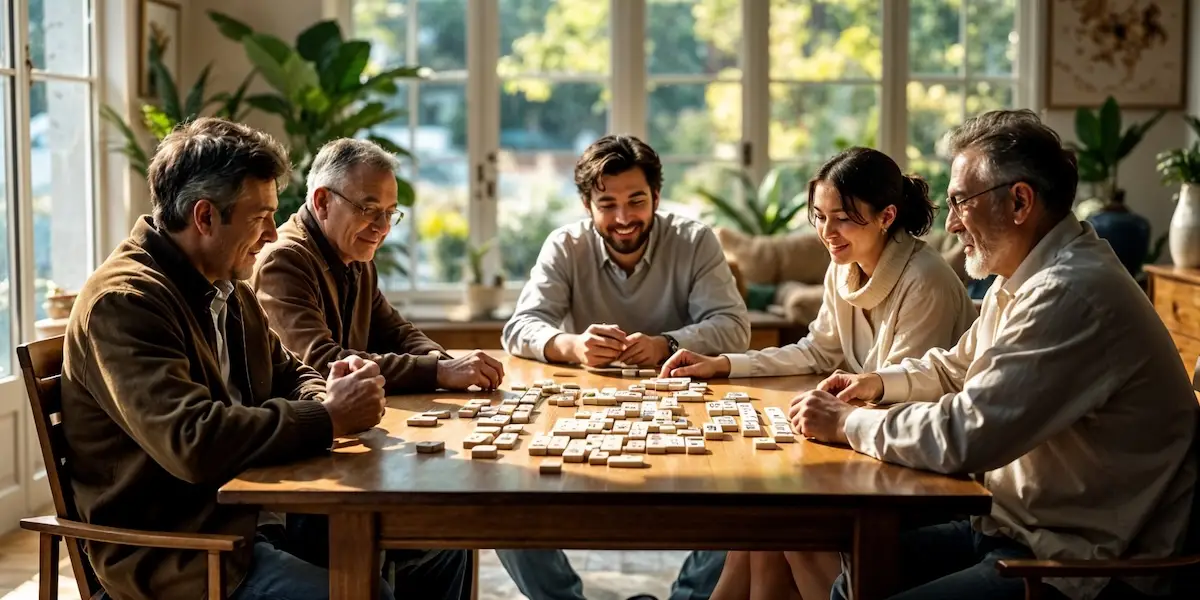Mahjong, a fascinating game with 144 artistically designed tiles, originated in 19th century China. Initially played by the Chinese aristocracy, it soon gained immense popularity across all social classes. The mixture of strategy, skill, and luck made Mahjong an integral part of Chinese culture.

In the 20th century, Mahjong began its triumphant journey around the world. Today, people in many countries enthusiastically play various versions of this game – from Mahjong Classic to modern variants. Its cultural significance and ability to connect people contribute to its enduring popularity.
Origin and History of Mahjong
Mahjong originated in 19th century China and is based on traditional card games. These games, where cards were drawn and discarded, were very popular in the 18th and 19th centuries. Over time, they evolved into the Mahjong tiles known today.
In the 1920s, the American Joseph Park Babcock brought Mahjong to the USA. He published a rulebook based on various versions he had encountered in China. Babcock named the game “Mah-Jongg” and registered this name as a trademark.
Today, Mahjong is known worldwide and played in many countries. There are numerous variants that differ in rules and gameplay. Despite these differences, the core of the game remains the same: a mixture of strategy, luck, and social interaction.
The Different Variants of Mahjong
Mahjong has spawned numerous variants worldwide that differ in rules and gameplay. A well-known version is American Mahjong, which became popular in the USA in the 1920s. This variant uses joker tiles and has specific cards with valid hand combinations. Players collect combinations that are determined annually by the National Mah Jongg League.
Japanese Mahjong, also called Riichi Mahjong, places great emphasis on strategy and tactics. It introduces the concept of “Riichi,” where players declare their readiness to win and place a stake. Additionally, there are “Dora” indicators that make certain tiles more valuable, making the game more exciting. Another variant is Three-Player Mahjong, which is mainly played in Japan, Korea, and Malaysia. In this version, certain tiles are omitted, and the dynamics change significantly due to the reduced number of players.
Strategic Depth and Complexity
Mahjong requires careful planning from players. One must constantly consider which tiles to keep or discard. These decisions significantly influence the course of the game. Additionally, it’s important to observe the moves of fellow players. This allows you to adapt your own strategies and anticipate possible moves.
A good memory also plays a central role. You must remember which tiles have already been played. This knowledge helps to estimate probabilities for future moves. At the same time, it promotes concentration and attention.
The complexity of Mahjong contributes significantly to its appeal. Each game unfolds differently, making the game varied. The mixture of strategy, memory training, and adaptability challenges the players.
Cultural and Social Aspects of Mahjong
Mahjong is deeply rooted in Chinese culture and reflects important aspects of cultural heritage. The game combines elements of Chinese philosophy such as Yin and Yang and the Five Elements Theory. In the Mahjong tradition, symbols and concepts are found that are closely linked to the Chinese worldview. The significance of playing Mahjong goes far beyond a mere game. It is an integral part of social life in China and serves as a link between generations. Families come together to play Mahjong, share stories, and pass on traditions.

In other cultures, Mahjong has also gained special social significance. In the Jewish-American community, for example, the game is more than just a pastime; it’s a tradition that builds community, supports charity, and connects generations. Mahjong evenings promote social exchange and strengthen the sense of community. Players communicate with each other, exchange strategies, and share moments of joy or regret. These interactions help to strengthen social bonds and promote the feeling of belonging to a community. The game requires cooperation and often negotiation skills, which improves the social competencies of the players.
Modern Adaptations and Online Presence
In today’s digital era, Mahjong has successfully made the leap from the traditional game table to digital platforms. Numerous online games and mobile apps allow players worldwide to enjoy a game anytime, anywhere. For example, “Mahjong Club – Solitaire Game” offers a modern implementation of the classic game for mobile devices.
Digitalization has significantly increased the popularity of Mahjong. Through easy accessibility via smartphones and computers, digital adaptations reach a broader audience than ever before. Particularly younger generations, who have grown up with digital media, are rediscovering Mahjong and appreciate the mixture of strategy and entertainment. Furthermore, online platforms enable playing with friends or strangers worldwide, strengthening the sense of community and promoting cultural exchange.
However, the digital transformation also brings challenges. Some players complain that the tactile experience of physical game tiles and direct social interaction at the table are lost. Nevertheless, digital platforms often offer chat functions and virtual communities to compensate for this shortcoming. Overall, the modern adaptation of Mahjong has not only made the game more accessible but also opened new ways for people worldwide to connect and experience traditional games in a contemporary context. Solitaire is another good example of how card games have been digitally implemented.
